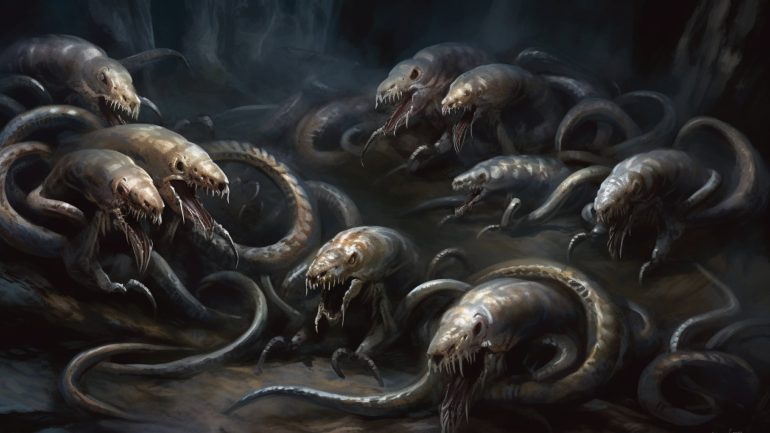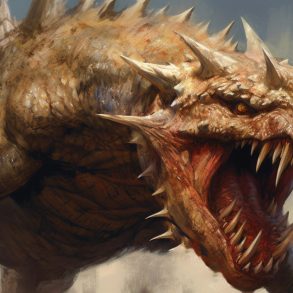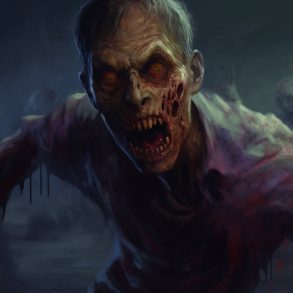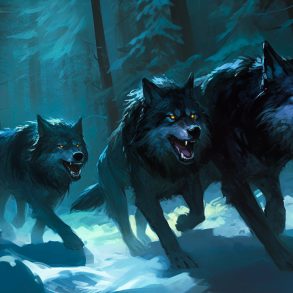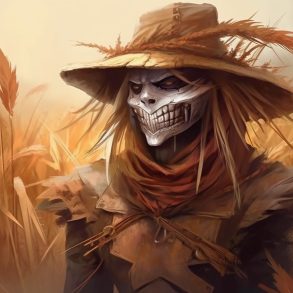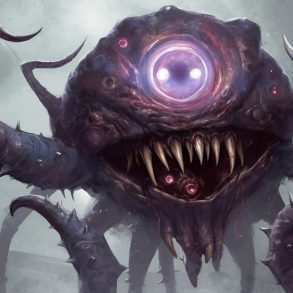In the deepest caverns and the shadowed floors of forest marshes, travelers, adventurers, and certain animals fall prey to death from disease and monstrous attacks. These untimely demises leave behind a veritable trove of nourishment for scavengers, but, in the worlds of Dungeons and Dragons, this means far more to Carrion Crawler 5E (MM, p. 37).
Insectoid scavengers
Carrion Crawlers resemble a large worm or centipede, with many tiny, claw-like legs allowing them to skitter around and climb surfaces. Near their face is a mass of poisonous tentacles, which also allows them a remarkable sense of smell to detect scents in the environment, primarily the odor of decay and blood that indicates their next meal.
These scavengers aren’t fussy about what they eat, devouring any remains they come across, bones included. However, they prefer to allow fresh meat to begin to decay if they have the time to do so. They typically inhabit caves, sewers, ruins, marshes, and dungeons though they can be found anywhere dark, damp, and likely to have creatures taking their last breath there.
Cowardly hunters
When seeking their next meal, carrion crawlers will roam their territory seeking out any scents that may lead them to meat. They will even follow a distant light for miles, instinctively believing that light will be wielded by meat just waiting to be overcome and devoured. Whilst wandering their territories, carrion crawlers will often climb along ceilings where possible, avoiding other monsters that might inhabit the floor and pose a threat to them. By moving in this manner, they can easily avoid monsters such as oozes and otyughs, whilst still being able to effectively ambush prey that makes the mistake of not looking up. Another common strategy for a carrion crawler on the hunt is to wait around a corner for prey to simply stumble into them and their poisonous tentacles.
The poison carrion crawlers produce through their tentacles is very potent and causes paralysis in those affected by it. Once a paralyzed creature is at its mercy, the carrion crawler will then drag them to a secluded spot, like a high ledge others may have trouble reaching, to kill the prey creature. It will then leave the remains behind to ‘ripen’ to its liking whilst it continues the hunt for more food.
Will you be making sure to look up on your next adventure? If this creepy crawly has you thinking about what to throw at your players next, then check out our monsters section, or if you want to increase your chances of survival, then check out our classes section for helpful guides. Until next time, may your Con saves be successful, and remember, look up!
How big is a Carrion Crawler?
A carrion crawler is a large creature, which means that they take up four squares on a grid, or roughly 10 ft. tall should it rear up. A visual guide to creature size can be found on page 248 of the Dungeon Master’s Guide (DMG).
Can you tame a Carrion Crawler?
Typically no, as they will most often be encountered as hostile monstrosities, with many spells normally used to tame beasts not applying to their creature type. However, it could be possible if you work with your DM towards this goal, your DM always has the final say on these matters.
